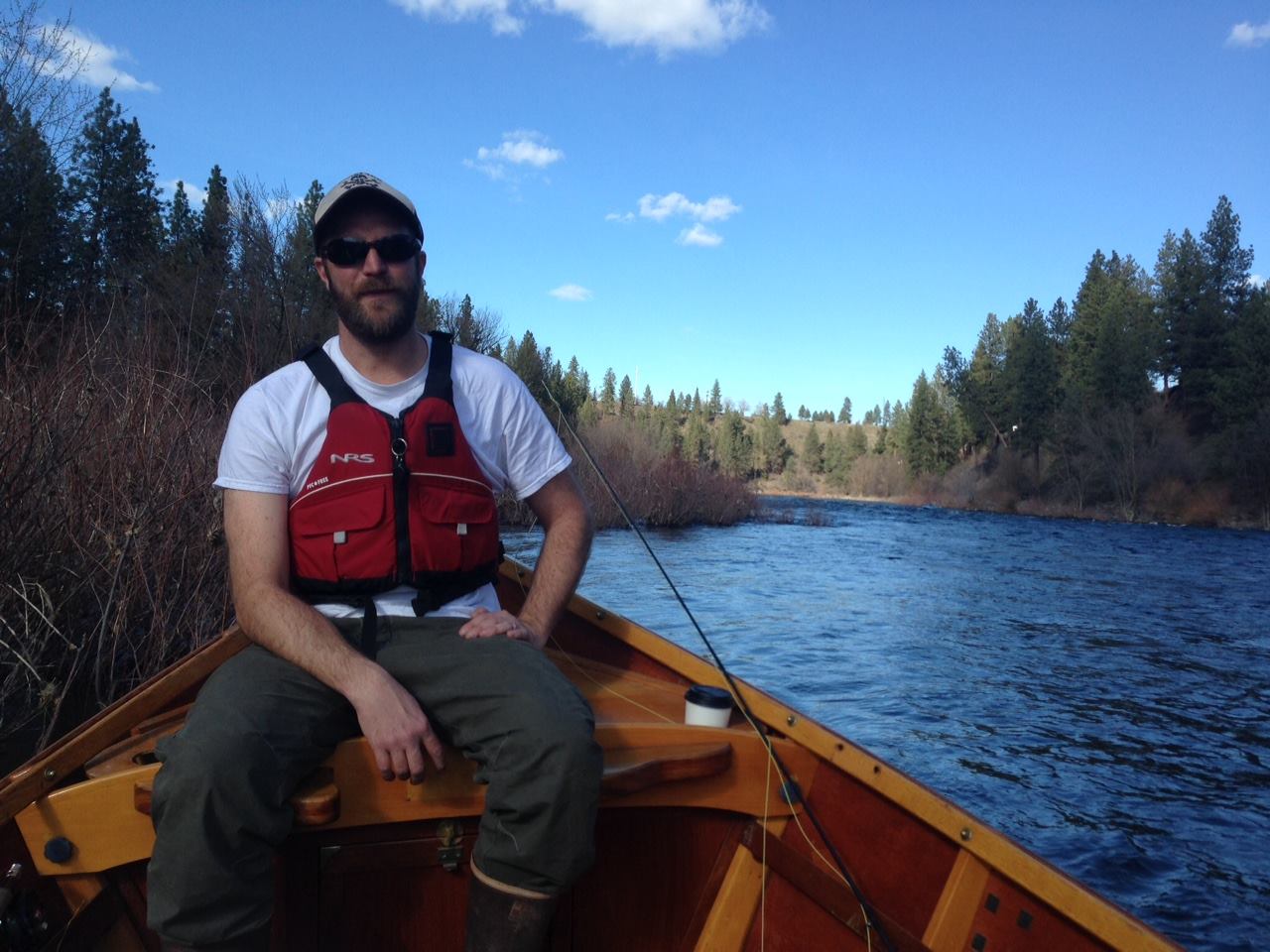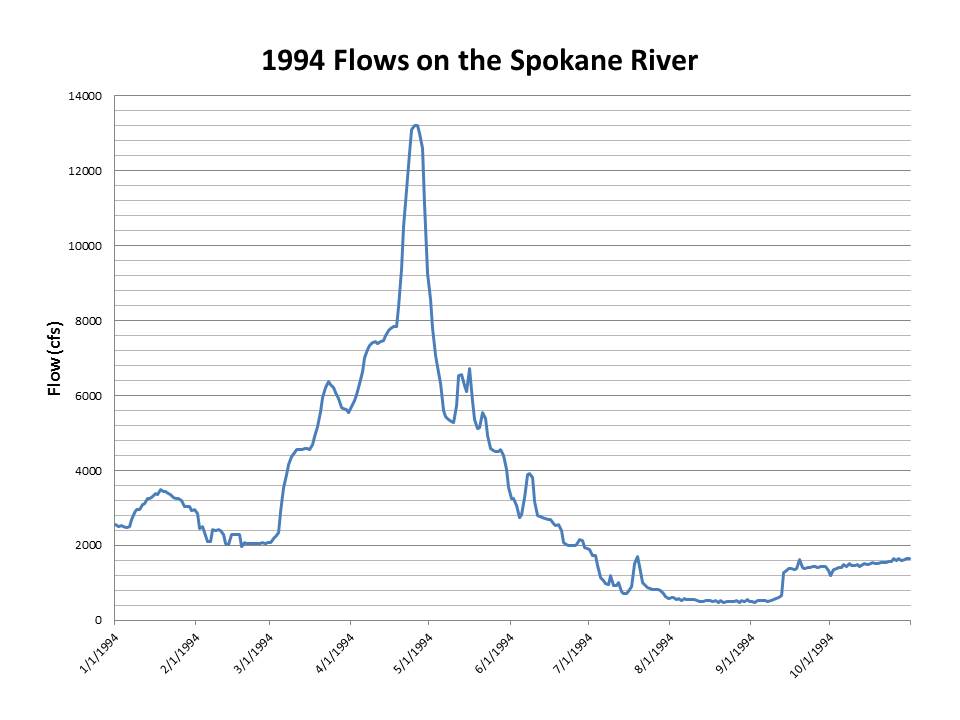I recently floated a rapidly dropping Spokane River, under bright sunny skies and unusually warm weather. I didn't catch any fish, but did work on my tan. 
I wondered if the warm and dry conditions, combined with the lack of snowpack in the mountains and an early spring runoff, would bring about the super low summer flows that would spell disaster for recreationalists and fishermen on the river. I did a bit of research, and this is what I found....
Below about 1000 cfs (cubic feet/second) the Spokane River becomes unfloatable in anything other than an inner tube. Looking back through the records I found that the summers of 2001, 2003, and 2005 all had flows of less than 600 cfs at some point during the summer, usually in August. As the graph of spring and summer flows below shows, many of these years had lower than average March snowpacks at Mt. Spokane as well (59, 68, and 24 percent of average, respectively). In comparison in 2014, Spokane River flows never dipped below 1000 cfs and March snowpack was about 79% of normal.
So it seems as if snowpack plays a role in our river levels. After all, without the snowmelt to feed our rivers, where would the water come from? But it's not the entire story. River level also relates to when the snow melts. Usually, river levels are high (over ~10,000 cfs) from late April and through May. But when the snow melts early, river levels can get very low during the summer. This situation occurred in 1994 when early spring runoff in April led to very low flows during all of August, as shown by the graph below.  This year's snowpack is the lowest on record and most of the snow has already melted from the mountains. So it seems likely that summer flows will be the lowest ever recorded on Spokane River. Not only could this affect the people that use our river, it could have huge consequences for the native Redband Trout. Spawning grounds, typically near the banks of the river, would be left high and dry during spring low flow.
This year's snowpack is the lowest on record and most of the snow has already melted from the mountains. So it seems likely that summer flows will be the lowest ever recorded on Spokane River. Not only could this affect the people that use our river, it could have huge consequences for the native Redband Trout. Spawning grounds, typically near the banks of the river, would be left high and dry during spring low flow.

